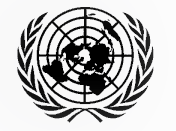Improvised explosive devices (IED) remain a multi-faceted, cross-cutting threat to peace, security and sustainable development. Increasing urbanization of conflict and new developments in the design and detonation of IEDs pose additional challenges to countering this multi-dimensional threat. IEDs continue to harm civilians, including United Nations personnel, disrupt the provision of humanitarian assistance, and impede the achievement of the Sustainable Development Goals. The use of IEDs in conflict, especially by non-state armed groups, has become common practice. IEDs are now a leading cause of death and injuries in the context of armed conflict.
Conventional ammunition is frequently used as a main charge in improvised explosive devices. As such, implementing the Global Framework for Through-life Conventional Ammunition Management is a key component of stemming access to material used for IEDs. Visit our ammunition webpage for more information.
Various legal instruments address specific aspects of IEDs, inter alia, the Convention on Prohibitions and or Restrictions of Certain Conventional Weapons (CCW) (Amended Protocol II on the Use of Mines, Booby-Traps and Other Devices and Protocol V on Explosive Remnants of War in connection with unexploded ordnance and abandoned ordnance), the Convention on the Marking of Plastic Explosives for the Purpose of Detection and the Anti-Personnel Mine Ban Convention (Ottawa Convention)
IED production takes place outside government controls. Therefore, a traditional arms regulation approach — regulating governmental production, trade, and use of this weapon through a multilateral agreement — may not yield results. Instead, the focus has been on the capacity of governments to effectively bring together several policy strands for comprehensive national action—from commercial mining, inner-city development, violent extremism, and military stockpile management, to agriculture and aviation security.
The General Assembly first adopted a resolution on “Countering the threat posed by improvised explosive devices” in 2015 (A/RES/70/46). In view of the devastating impact of IEDs, a consensus resolution in the First Committee was pursued with particular emphasis on the need for coordination and international cooperation and assistance.
Through this resolution (A/RES/71/72), the United Nations Office for Disarmament Affairs was requested to establish, where feasible and in coordination with other relevant entities, an online hub providing impartial, authoritative information relevant to addressing the issue of IEDs in a comprehensive manner, thus facilitating access to existing initiatives, policies and tools presenting good practices, inside and outside the United Nations system, filling gaps where needed but avoiding duplication.
This webpage is intended to serve this purpose and is currently being updated.
General Assembly
Resolutions
2022 | A/RES/77/64
2020 | A/RES/75/59
2018 | A/RES/73/67
2017 | A/RES/72/36
2016 | A/RES/71/72
2015 | A/RES/70/46

